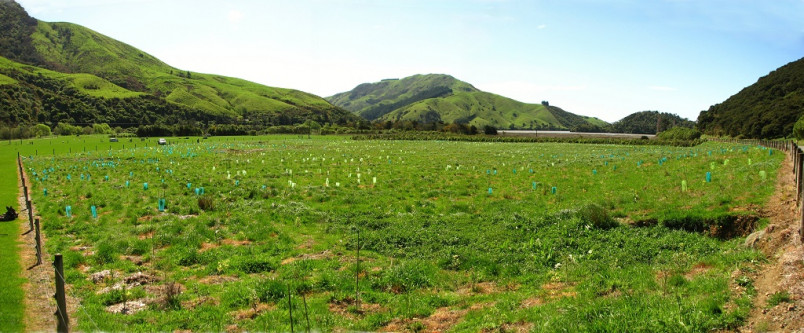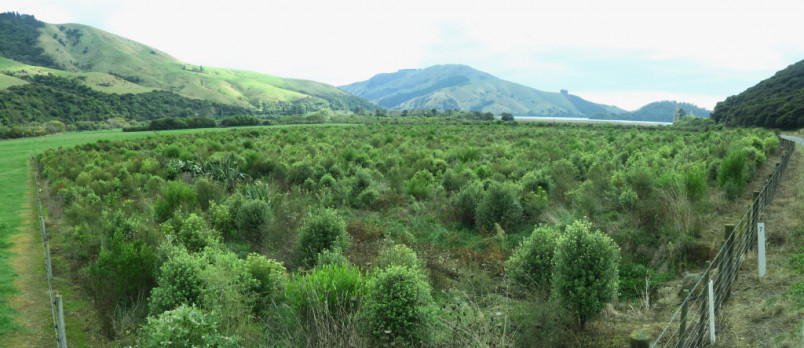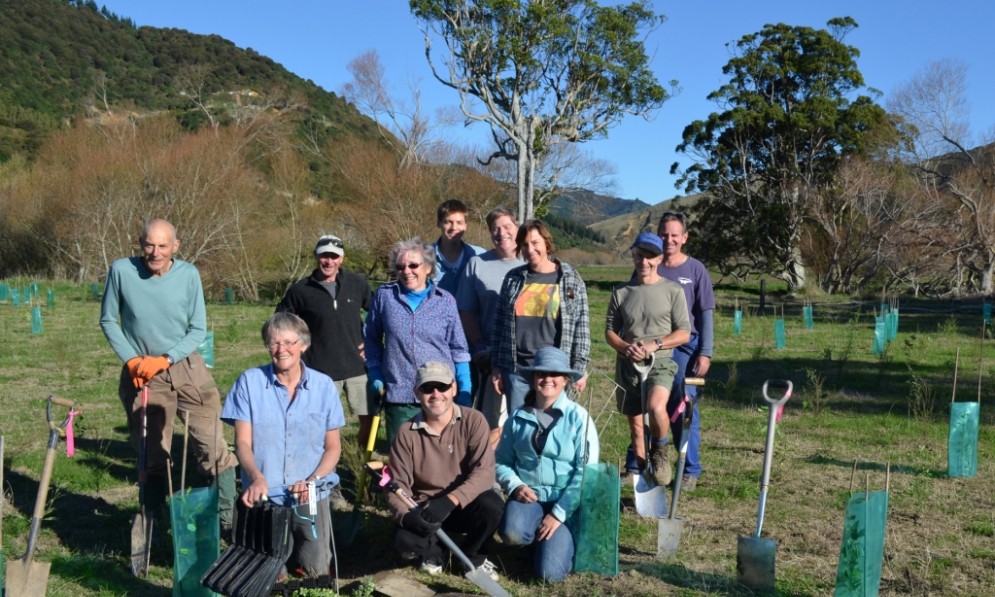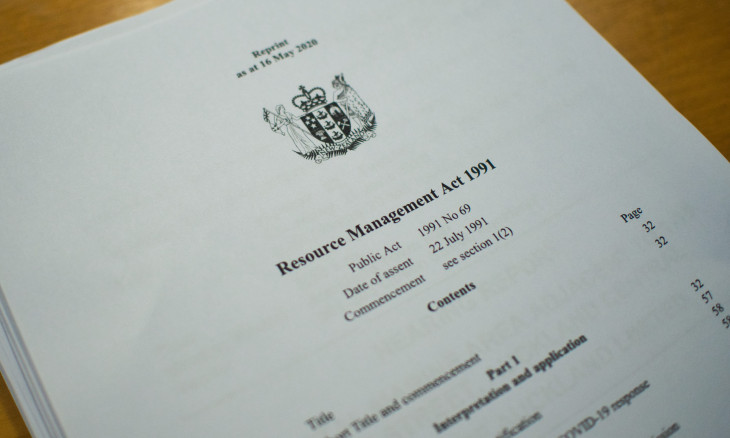Paremata Flats Reserve is a publicly-owned area, under the jurisdiction of Nelson City Council, encompassing tidal, river and land biodiversity systems.
The reserve of approximately 30 hectares has a particularly high ecological value due to the patch of lowland coastal forest that protects some important forest remnants, including large specimens of kahikatea and kowhai.
This remnant of coastal forest and surrounding estuary provide outstanding habitat for a variety of wildlife, including fernbird (mātātā) and banded rail (moho pererū). Fernbird have a distinctive call and are more often heard than seen, living in dense, low wetland vegetation. Banded rail are shy, secretive and reluctant to take to the air. They are found in swamps dominated by reeds and sedges.
Just 20kms north of Nelson, the reserve is open to the public and included in the Walk Nelson collection of walks: 20 - Paremata Flats - Nelson City Council. All are welcome to visit and enjoy this beautiful place.
Restoration project
The Paremata Flats Reserve was created in 1998 by the Nelson City Council with the support of the Department of Conservation. The reserve has been fenced off since 2000.
Paremata Flats Reserve has become known for the success of planting and maintaining the reserve leading to regeneration of native flora and fauna. This success is mainly due to two conservationists who put in invaluable time and effort to establish the program. Julie McLintock started and led the Forest and Bird project from 2007 and Ian Price joined the leadership since 2009. Jointly they raised over $200,000 to help fund the planting and trapping. Ian's contribution was recognised through a number of awards including a Kiwi Bank Local Hero award in 2015.
Forest and Bird Nelson Tasman has run a twice-weekly volunteer pest trapping program since 2007, which has helped to stabilise fernbird and banded rail populations. Starting with just 40 traps, the project has steadily expanded. As of 2023, a team over around 35 trappers monitor 3 trap lines (Paremata, Uri O Te Wai and Maori Pa Rd ) with over 300 traps in total. The predators caught included (in order of numbers): mice, rats, hedgehogs, weasels, stoats, possums and ferrets.

Paremata Flats May 2016. Credit: Ian Price

Paremata Flats May 2019. Credit: Ian Price
We previously held annual planting days to restore the area with species of makaka, olearia solandri, flax, kahikatea, kowhai, and melicytus and pittosporum species, with over 96,000 trees planted. These species provide food and shelter for fernbirds, tui and kereru. By planting podocarps in the reserve, Forest & Bird are also restoring the once extensive alluvial podocarp forest.
In addition to annual planting, Forest and Bird Nelson Tasman have coordinated weeding working bees, originally weekly and now monthly, to help the plantings get established. Of particular concern are old man’s beard and blackberry. During particularly dry periods, Forest and Bird have watered young and vulnerable plantings.
Caring for the plantings is now our key focus, along with continued trapping. We are always looking for more volunteers to join us in this work – please get in touch if you are interested (details below).
There is a website from the initial stages of the project – this includes videos and photos of the area and restoration work: www.paremataflats.co.nz. Note that this website is no longer maintained, but kept as a record of all the work involved.
More information about the Reserve
The Paremata Flats Reserve is included in two Nelson City Council plans. Forest and Bird will continue to work with NCC to restore and protect the reserve.
Esplanade and Foreshore Reserves Management Plan 2008 (pages 28-30 cover Paremata Flats Esplanade Reserve): download from Parks and Reserves Management Plans - Nelson City Council.
Parks and Reserves Asset Management Plan 2018-2028 (page 168 covers future plans for Paremata Flats): download from Parks and Reserves Asset Management Plan - Nelson City Council.
History of the area
Delaware Inlet was an important site for Māori because of its many unique features. It has abundance of food supply of cockles, pipis, mussels, flounders, eels and whitebait within the estuary. It also provided access to coastal fishing and trading, several sources of fresh water, cultivation sites protected from the elements, and suitable habitation sites. Evidence of Māori occupation in the Cable Bay area (Rotokura) dates back to about 1150 AD.
Around the 1820s, with disruption from colonisation in the North Island, Ngāti Tama established in Te Tauihu (Tasman, Nelson and Marlborough), with their main pā at Wakapuaka.
From the 1840s, the New Zealand Company established Nelson, as their second settlement after Wellington.
Wi Katene Te Puoho, chief of Ngāti Tama, resisted European efforts to acquire Ngāti Tama land at Wakapuaka. When he died in 1880, the status of more than 17,500 acres (7,100 ha) was Original Native Title and communally owned. After an extended dispute, title was awarded to his daughter, Hūria Mātenga, and the land became a saleable commodity. Of the 17,500 acres held in 1845, only about 3,650 acres remained as the tribal land.
With European settlement, the native forest was cleared for farming and cut for timber, shingles and firewood. Farmers brought in sheep, goats and cattle to graze pasture. Human induced changes around the Delaware Inlet increased the sediment load in the estuary and farming has put agricultural chemicals and nitrogen runoff into Wakapuaka River. Despite decades of misuse to the natural state of the land, Delaware Inlet remains to be one of the least impacted South Island estuarine systems.
Delaware Bay and Inlet are named after a ship wrecked there in 1863. Hūria Mātenga and other Ngāti Tama rescued the crew. Rescue of the crew of the Delaware 1863 (theprow.org.nz)
Paremata Flats is named after a Ngāti Tama chief, Paremata Te Wahapiro, brother of Wi Katene Te Puoho. The brothers, Wi Kātene Te Pūoho and Paremata Te Wahapiro (theprow.org.nz)
References:
The Prow website: www.theprow.org.nz: Wakapuaka Kāinga sites (theprow.org.nz)
Cable Bay Visitor Information Guide - NelsonTasman.NZ
OUR HISTORY - Ngāti Tama (ngatitama.nz)
Guide to Delaware Inlet, by Gail Franko, DSIR Publishing, 1988 – available from the Nelson Public Libraries.

Forest and Bird planters at Paremata Reserve
What can you do
If you would like to be part of the team caring for this amazing place, you are welcome to join our monthly working bees – usually first Saturday of the month (except January), 9am-12midday. We also welcome new volunteers for the trapping team.
Contact Miang for more information and to be included on the list for volunteer email updates.










